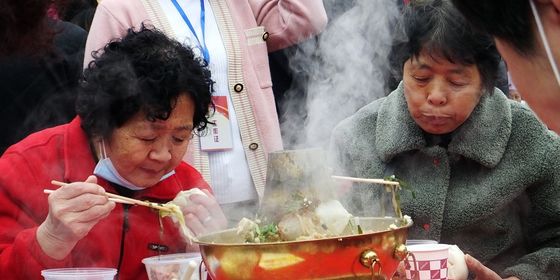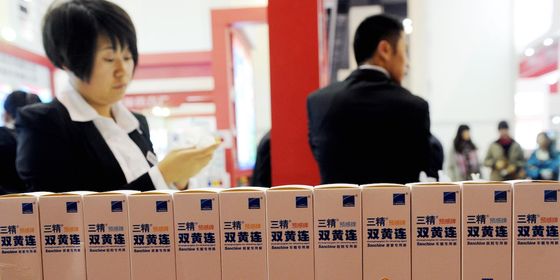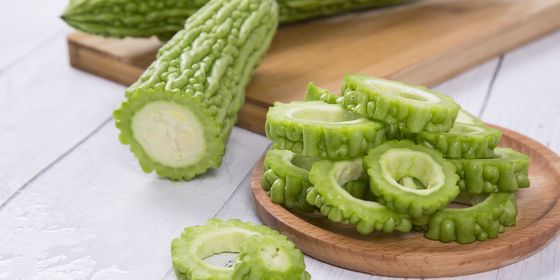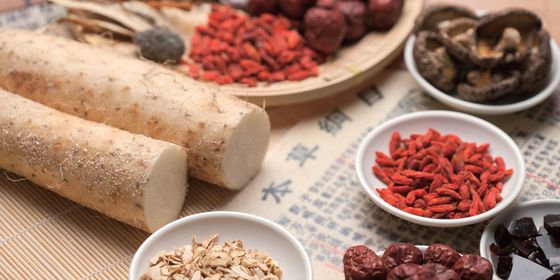The lingering debate over “excessive heat” (上火) and “catching chill” (着凉) in Chinese medicine
In China Rich Girlfriend, the second novel in the popular Crazy Rich Asians franchise, the character of Eleanor Young complains of getting a headache after consuming “heaty” foods on a trip to London with her friends. Though a throwaway line in the book, the folk medicine concept of shanghuo (上火 “catching heat”) and its counterpart, zhaoliang (着凉 “catching chill”), have long been debated in Chinese communities worldwide—whether they exist, what causes them, what their symptoms are, and how to translate them into other languages.
“It’s a philosophical manifestation, alien even to most Chinese, there are many types and forms of this manifestation that even it confuses many professional TCM [traditional Chinese medicine] practitioners,” notes the top answer to “Can western people understand ‘excessive internal heat’ (上火)?” on Q&A app Quora (there’s no consensus on the translation, but “heaty” appears to be the preferred English word in Singapore, where the Crazy Rich Asians trilogy is set). Other answers compare the concepts to “humors” in medieval Western medicine, or acidic and alkaline foods in modern celebrity diets.
Actually, neither shanghuo nor zhaoliang appears in ancient TCM texts. The former is a colloquial term for the symptoms of renzheng (熱症 “hot sickness”), a term describing an excess of yang energy within the body, which first appears in China’s oldest medical text, The Classic of the Yellow Emperor (《黄帝内经》).
Today’s TCM practitioners acknowledge two big types of “hot sickness”, “real heat” (实热) and “virtual heat” (虚热). “Real heat” has causes as wide-ranging as eating spicy food to being angry to weather changes, and equally diverse symptoms, including thirst, sore throat, congestion, and sores in the mouth. “Virtual heat” can be caused by overwork or staying up late, which leads to the dysfunction of the yin, leading to symptoms such as dry mouth, dry or sore throat, and itchy skin.
The opposite of renzheng, hanliang (寒涼 “frigid cold”), refers to a type of “cold sickness” caused by eating raw or cold food in long-term, or low temperatures. The main takeaway is that the terms rezheng and hanliang do not refer to one’s body temperature, but to the cause of the illness.
The diagnosis of rezheng and hanliang are complex and usually varies by patient. This usually involves observation, including tongue and pulse tests. Additionally, the balance of a person’s yin and yang is believed to vary by time, regional environment, and individual. People determined to have a yang-dominant nature (typically men) are advised not to eat food with a “hot” nature, and those of yin natures (typically women) should not eat too much “cold” foods.
Today, though, most laypeople’s guides simply categorize different foods and medicines as “hot” and “cold” types, and recommends eating or avoiding them depending on what energy one wants to increase. According to Lau Chun-Yue, a registered doctor of Chinese medicine at Hong Kong-based Ecpass Medical Ltd, examples of “hot” foods include:
- Durian
- Lichi
- Longan
- Lamb
- Pepper
- Garlic
Taiwan’s Common Health magazine has also published a guide to “cold” foods, including:
- Bread
- Germ rice
- Cereal
- Grain rice
- All cold drinks
- Lettuce
Special thanks to Lau Chun-Yue for his contribution to the medical history and diagnostic information.












